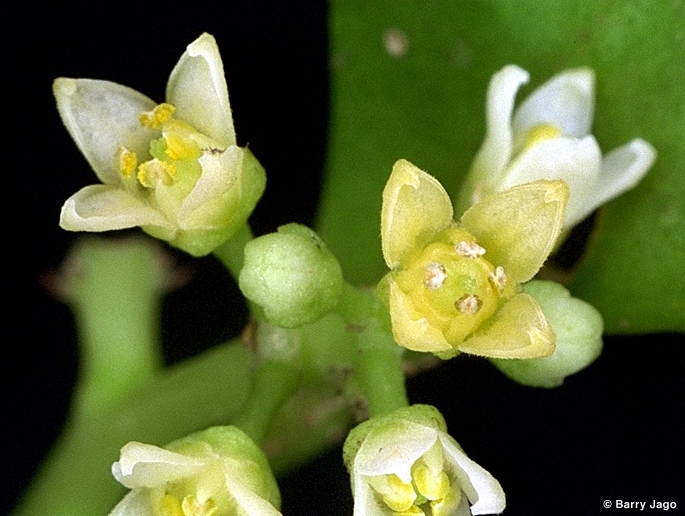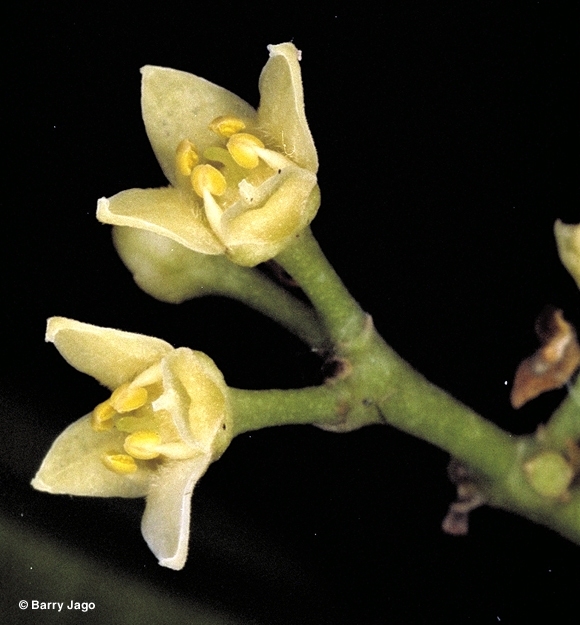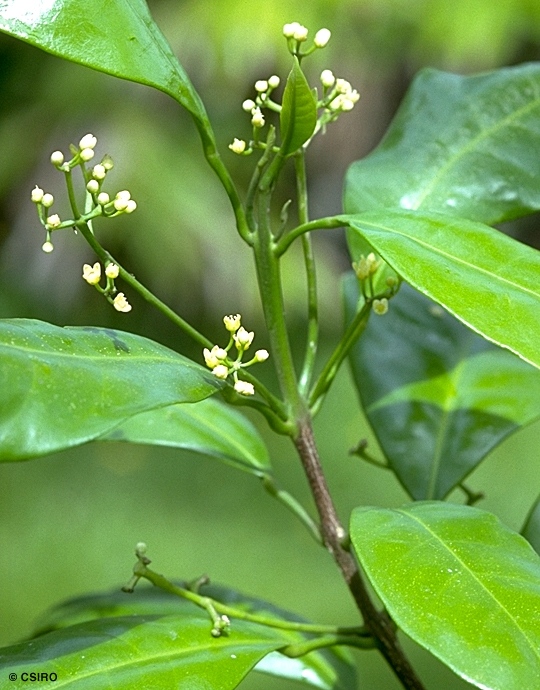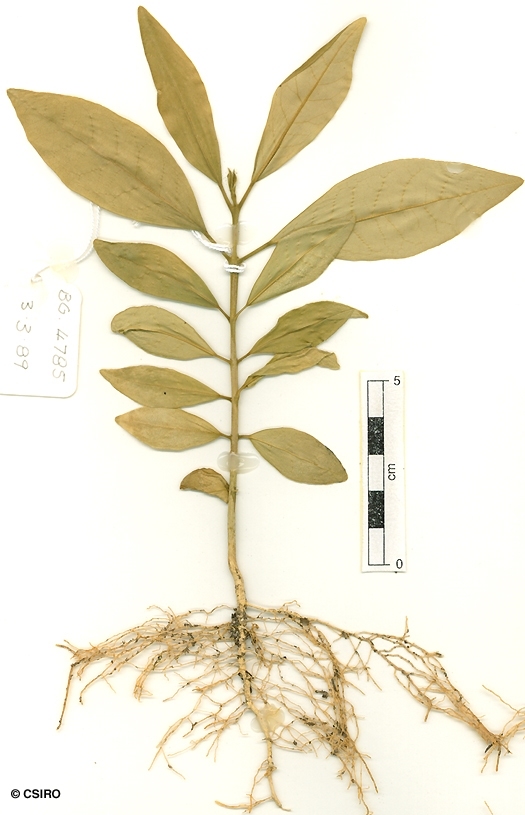Australian Tropical Rainforest Plants - Online edition
Pitaviaster haplophyllus (F.Muell.) T.G.Hartley
Click/tap on images to enlarge

Flowers. © Barry Jago

Flowers. © Barry Jago

Leaves and Flowers. © CSIRO

Fruit, two views, cross section and seed. © W. T. Cooper

Scale bar 10mm. © CSIRO

10th leaf stage. © CSIRO

Cotyledon stage, epigeal germination. © CSIRO
Family
Hartley, T.G. (1997) Adansonia Ser. 3 19: 202.
Common name
Yellow Aspen
Stem
Seldom exceeding 30 cm dbh.
Leaves
Flowers
Fruit
Seedlings
Cotyledons obovate, about 20-30 x 15-25 mm, penninerved but 3-veined at the base. At the tenth leaf stage: leaf blade elliptic, apex acute to acuminate; oil dots numerous. Seed germination time 13 to 120 days.
Distribution and Ecology
Endemic to Queensland, occurs in NEQ. Altitudinal range from sea level to 1150 m. Grows as an understory tree in well developed rain forest on a variety of sites.
Synonyms
Acronychia tetrandra F.Muell., Fragmenta Phytographiae Australiae 9: 104(1875), Type: In montibus litoralibus apud sinum Rockinghams Bay, ubi etiam Entada persaetha nascitur. J. Dallachy. 17 Nov. 1865, holo: MEL. Acronychia haplophylla (F.Muell.) Engl., Die Naturlichen Pflanzenfamilien 3(4) : 180(1896). Euodia haplophylla F.Muell., Fragmenta Phytographiae Australiae 5: 179(1865), Type: In montibus litoralibus apud sinum Rockinghams Bay, ubi etiam Entada persaetha nascitur. J. Dallachy. 17 Nov. 1865, holo: MEL.
RFK Code
162
Copyright © CSIRO 2020, all rights reserved.

Web edition hosted at https://apps.lucidcentral.org/rainforest




